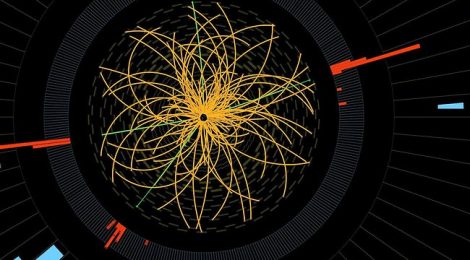God's particle seen for the first time to decay
The discovery, announced on Tuesday, was obtained on the world's largest particle accelerator.

Physicists have observed the decay of the Higgs boson, a particle that gives mass to other elementary particles, in a pair of other smaller particles, the bottom quarks, a process predicted in the standard model of particle physics
The discovery, announced on Tuesday, was obtained on the world's largest particle accelerator, the European Particle Physics Laboratory (CERN), which announced the feat.
The standard model of particle physics, a theory that describes the elementary particles that make up the matter of the universe, predicts that the Higgs boson will disintegrate into bottom quarks in 60 percent of cases.
Although this radioactive decay or disintegration is the most frequent of all, its observation is extremely difficult, since it is necessary to distinguish it among the "noise" of many other forms of producing this elementary particle.
The observation was recorded six years later on the discovery of the Higgs boson, also known as Particle of God, and involved two accelerator experiments, ATLAS and CMS.
The quark, such as Higgs particle, are elementary particles. The bottom quark is the second heaviest quark out of a total of six, up, down, strange, charm, bottom, and top.
The quarks up and down are the lighter particle, they are in the nucleus of the atoms of the vulgar matter, being thus the constituents of neutrons and protons. The four remaining particles, strange, charm, bottom, and top existed at the beginning of the Universe and are now created in particle accelerators and cosmic ray collisions with the atoms present in the Earth's atmosphere.
For the Laboratory of Instrumentation and Experimental Physics of Particles, the observation opens the way to more precisely study the interactions of the Higgs boson with the quarks top and bottom, and thus to test the properties of this unique particle, being able to come to respond to some of the deepest mysteries of particle physics.
To obtain a statistically significant observation of the disintegration of the Higgs boson into a pair of bottom quarks, physicists combined data from various periods of operation of the accelerator and employed very complex data analysis methods, reports LIP.
Six years later, scientists finally succeeded in confirming the decay of God's Particle. The discovery opens doors to study in more detail the elementary particle and how it interacts with other materials and other particles not yet discovered, such as dark matter.
The next steps of the investigation involve refining the measurements in order to observe the disintegration with a higher resolution.
- READ MORE ON:
- God Particle
- particle physics
- elementary particles
- Higgs boson










